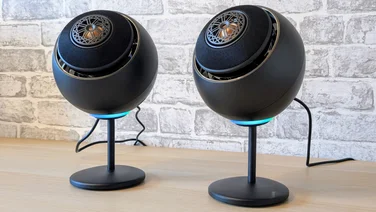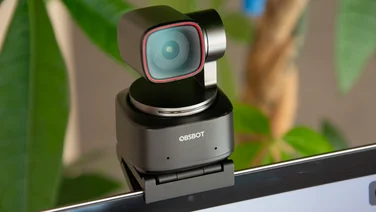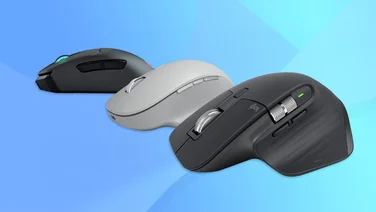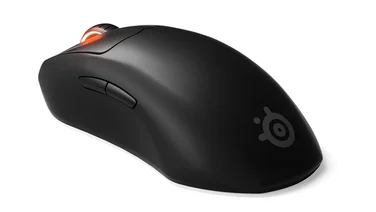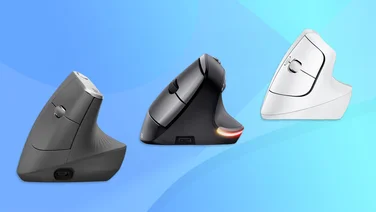To help us provide you with free impartial advice, we may earn a commission if you buy through links on our site. Learn more
- Why you can trust us
- Best external hard drives: At a glance
- The best external drives to buy: SSDs
- 1. Samsung T9: Best all-round external SSD
- 2. Crucial X9 Pro: Best mainstream SSD
- 3. Kingston XS1000: Best compact external SSD
- 4. Western Digital WD_Black P40: Best external SSD for gamers
- 5. Lexar SL500: Best slimline external SSD
- 6. PNY RP60: Best rugged high-speed portable SSD
- 7. LaCie Rugged SSD Pro5: Fastest external SSD for Macs and high-end Windows laptops
- 8. SanDisk Pro-Blade: Best storage system for creative professionals
- The best external drives to buy: HDDs
- 1. Seagate One Touch: Best cheap HDD
- 2. Western Digital My Passport for Mac: Best portable HDD for Macs
- 3. Seagate One Touch Hub: Best high-capacity desktop HDD
- 4. Toshiba Canvio Flex: Best for USB-A and USB-C connectivity
- 5. Toshiba Canvio Gaming: Best external HDD for PC and console gaming
- 6. SanDisk G-Drive Armor ATD: Best ruggedised external hard drive
- How we test external hard drives
- How to choose the best external hard drive for you

If you’re running out of space on your laptop or your phone and you’d rather not spend a fortune on terabytes of cloud storage – or you need somewhere to back up all your precious data – an external hard drive is the most convenient and cost-effective solution.
Our favourites – listed below and all individually reviewed and tested – start at a mere £50, allowing you to add huge amounts of extra storage for a relatively small amount of money.
External drives have never been so plentiful or cheap. Read on to find out which one you should spend your hard-earned cash on.
Why you can trust us
We’ve been reviewing and testing external hard drives since the late 1990s, first in print magazines, and now online for Expert Reviews, and it’s fair to say we’ve reviewed hundreds of drives in that time. That doesn’t mean researching and testing gets any easier, however.
Technology moves on, prices change and every year brings hard drives with new features. So we have to research the market every time we update this page to ensure it reflects the latest developments as well as the very best products you can buy.
Once we’ve narrowed down the drives we review, we run a series of benchmark tests on each one, so you can see how they perform compared to one another. If you want to know more about how we test external hard drives and see the results of these tests, read our buyer’s guide which you’ll find below our reviews.
Best external hard drives: At a glance
| Best cheap external hard drive | Seagate One Touch (From £55) | read more | |
| Best high-capacity external hard drive | Seagate One Touch Hub (From £105) | read more | |
| Best high-performance external hard drive | Samsung T9 (From £127) | read more | |
| Best mainstream SSD | Crucial X9 Pro (From £83) | read more |
The best external drives to buy: SSDs
1. Samsung T9: Best all-round external SSD
Price when reviewed: £127 (1TB); £200 (2TB); £363 (4TB) | Check price at Amazon

|
Pros
|
Cons
|
Key specs – Type: Portable SSD; Connectivity: USB 3.2 Gen 2×2 Type-C (max 20Gbits/sec), USB-3.2 Gen 2 Type A (Max 10Gbits/sec)
The Samsung T9 is a drive for those who simply won’t compromise on performance. It comes with a super fast SSD encased in an attractive case offering the very fastest connectivity standards.In our tests, we found it was more than ten times faster than most portable HDDs, with speeds reaching a blinding 2,033.8MB/sec while reading large files and 1,870.9MB/sec for writes. While that isn’t quite as fast as the Seagate Firecuda Gaming SSD (see below), the difference is minimal.
Small file, random read/write speeds are also strong, making this a good choice for running games and apps. To get the best performance from this drive, however, do be aware you need a USB-C port that supports the USB 3.2 Gen2x2 standard; without that, sequential read/write speeds drop by roughly 50%, that’s still pretty nippy, though.Otherwise, this is a typically classy SSD from Samsung, with a thick, sculpted, rubberised casing that makes it drop-resistant for up to three metres. The casing also keeps it cool in operation, while Samsung’s Magician software handles drive health checks and 265-bit hardware-based AES encryption. If you’re looking for a tough, high-performance SSD for content creation or business, this is a great, all-round choice.
Read our full Samsung T9 review
2. Crucial X9 Pro: Best mainstream SSD
Price when reviewed: £83 (1TB); £139 (2TB); £250 (4TB) | Check price at Amazon

|
Pros
|
Cons
|
Key specs – Type: Portable SSD; Connectivity: USB-C/A 3.2 Gen 2 (max 10Gbits/sec)
Not everyone needs the immense sequential read/write performance of a USB 3.2 Gen 2×2 SSD, and a surprising number of PCs and laptops don’t even support such drives at their full speed. If you’re stuck with a straight USB-C or USB-A 3.2 Gen 2 port, you’re better off sticking with a drive like the Crucial X9 Pro.
First, it’s excellent value, costing much less than the Samsung T9 if you want to buy a 2TB or 4TB drive. It’s also light at 38g and very compact, while being incredibly well-built. The dark grey aluminium shell is IP55 certified for water and dust resistance, and drop-proof from up to two metres. Crucial bundles in a USB-C to USB-C cable and a USB-A adapter, so you’re good to go across a wide range of devices.
Most of all, performance is as good as it gets across a USB 3.2 Gen 2 connection. In our tests, the X9 Pro reached sequential read speeds of 1,091MB/sec and write speeds of 1,013MB/sec, putting it in front of the Kingston XS1000. Random read/write speeds weren’t as impressive, but you could still use the X9 Pro to run apps and games. More modern laptops and PC motherboards now support USB 3.2 Gen 2×2, but if yours doesn’t, this is the drive to buy.
Read our full Crucial X9 Pro review
3. Kingston XS1000: Best compact external SSD
Price when reviewed: £76 (1TB); £97 (2TB) | Check price at Amazon

|
Pros
|
Cons
|
Key specs – Type: Portable SSD; Connectivity: USB-A 3.2 Gen 2 (max 10Gbits/sec)
We love the Kingston XS1000 not for its rapidity, but for its price and its tiny dimensions. Starting at well under £100 for the 1TB model, it’s much cheaper than some of its more exotic rivals, and despite not being the fastest SSD, it’s still a lot faster than a portable HDD.
Like its sibling, the XS2000, it measures a mere 3cm wide and just under 7cm long, making it only a touch larger than a standard USB thumb drive. The matte black plastic and metal casing provides decent levels of protection, too.
Oddly, the XS1000 connects via a USB-C port on the drive but Kingston only includes a USB-C to USB-A cable in the case. It works perfectly well with a USB-C to USB-C connection, though, and it provides the same levels of performance, too, although you’ll need to provide the cable.
The Kingston XS1000 isn’t the fastest external SSD, only connecting over USB 3.2 Gen 2, instead of the faster USB-C 3.2 2×2 of premium rivals like the Samsung T9. However, it reached 1,062MB/sec read speeds and 987.9MB/sec write speeds in our tests, which is more than respectable.
Read our full Kingston XS1000 review
4. Western Digital WD_Black P40: Best external SSD for gamers
Price when reviewed: £148 (1TB); £201 (2TB) | Check price at Amazon

|
Pros
|
Cons
|
Key specs – Type: Portable SSD; Connectivity: USB-C 3.2 Gen 2 (max 20Gbits/sec)
The WD_Black P40 is a great SSD for gamers, particularly those who find everything improved by the addition of RGB lighting. Here, strips underneath each side can be illuminated with a range of colour shifting and pulsing effects, adding interest to the cool industrial style.
Just be aware that while PC gamers with 20Gbit/sec USB 3.2 Gen 2×2 connections can make the most of this drive’s high performance, console gamers will be stuck at lower 10Gbit/sec USB 3.2 Gen 2 speeds.
If you have the right ports, performance is amazing. In our testing, the WD_Black P40 posted faster sequential read and write speeds than even the mighty Samsung T9. And while it fell behind very slightly when it comes to random read/write speeds, it was still far faster than most of the competition. You could happily run most of your Steam games library directly from this SSD, with games and save games loading quickly.
Sure, it’s one of the most expensive external SSDs, but it’s speedy, eye-catching and comes with genuinely useful software. It’s the gaming drive to buy if your PC or laptop supports USB 3.2 Gen 2×2.
Read our full Western Digital WD_Black P40 review
5. Lexar SL500: Best slimline external SSD
Price when reviewed: £95 (1TB); £146 (2TB) | Check price at Amazon

|
Pros
|
Cons
|
Key specs – Type: Portable SSD; Connectivity: USB-C 3.2 Gen 2×2 (max 20Gbits/sec)
Under 5mm thick at its two long edges and only 7.8mm in the centre, the Lexar SL500 is the slimmest portable SSD we’ve tested, and at 48g it’s a real featherweight. And while it doesn’t have the shock or water-proofing of the Samsung T9, the aluminium body feels extremely solid. The drive can be used with a wide range of PCs, laptops, iPhones, iPads and Android devices, and meets Apple’s requirements for capturing 4K/60fps video directly from recent iPhones. The style, design and weight makes the SL500 perfect for that kind of mobile storage role.
However you use it, though, this thing is fast. In our testing, its sequential read/write speeds proved nearly as fast as the WD-Black P40, and it’s only when you get to random read/write tests that it falls behind that drive and the Samsung T9. It also comes with Lexar’s DataShield app, which handles basic backup and restore tasks, and allows you to create an encrypted, private ‘safe’ on your drive as well.
The Lexar SL500 packs a lot of high-speed storage into an impressively compact unit, and it’s competitively priced as well, giving you USB 3.2 Gen 2×2 speeds at a lower cost than many of its rivals. It won’t weigh you down or break the bank.
Read our full Lexar SL500 review
6. PNY RP60: Best rugged high-speed portable SSD
Price when reviewed: £91 (1TB); £230 (2TB) | Check price at Amazon

|
Pros
|
Cons
|
Key specs – Type: Portable SSD; Connectivity: USB 3.2 Gen 2×2 (max 20Gbits/sec)
The RP60 is a fairly chunky portable SSD, measuring 97 x 60 x 12.4mm, even if it only weighs 105g. It is, however, incredibly rugged, with a IP65 water and dust resistance and drop resistance for up to 3m. It’s built to survive life on the trail, and it will definitely make it through a trip or your daily commute. What’s more, it’s a fast USB 3.2 Gen 2×2 drive, promising read speeds of up to 2,000MB/sec and write speeds of up to 1,800MB/sec. As always, you’ll only reach these levels of performance if you have a USB 3.2 Gen 2×2 port on your laptop or PC, of course.
In tests, the drive lives up to PNY’s billing, even beating speed demons like the WD_Black P40 and Samsung T9 with sequential read speeds of 2,091.6MB/sec, though its 1,866MB/sec sequential write speeds are a little slower. Its random read/write speeds are impressive, too. PNY also bundles in Acronis TrueImage backup software. High prices make it less attractive than it should be, but the RP60 is a great drive if you spot it in a sale.
7. LaCie Rugged SSD Pro5: Fastest external SSD for Macs and high-end Windows laptops
Price when reviewed: £360 (2TB); £580 (4TB) | Check price at LaCie

|
Pros
|
Cons
|
Key specs – Type: Portable SSD; Connectivity: Thunderbolt 5 (max 80Gbits/sec)
The LaCie Rugged SSD Pro5 is the first Thunderbolt 5 drive we’ve tested and it’s also the fastest – by a long way. This is a drive that can reach similar speeds to your internal MacBook SSD, which means you can offload everything from apps to huge files without worrying about everything slowing down. We recorded read speeds up to 7GB/sec and write speeds up to 5.2GB/sec.
In other words, it’s incredibly fast. It’s also a tough, rugged thing. It’s clad in a shockproof rubber jacket, fits in the palm of your hand and comes complete with an IP68 rating for dust and water resistance, plus a five-year warranty with data recovery included, should the absolute worst happen.
There are a couple of fairly major caveats, however. If you want to take maximum advantage of its top speed, you’ll need a laptop with a Thunderbolt 5-capable USB-C port, something only a few laptops have (at the time of writing). Because it has a minimum power requirement of 15W, it won’t work with legacy USB-A ports, either. And it’s pretty expensive, too, at £360 for a 2TB drive and £580 for the 4TB modes. Still, if you want a very fast, portable drive, there is nothing faster out there right now.
8. SanDisk Pro-Blade: Best storage system for creative professionals
Price when reviewed: £192 (1TB); £207 (2TB); £389 (4TB)| Check price at Amazon

|
Pros
|
Cons
|
Key specs – Type: Removable SSD storage system; Connectivity: USB-C 3.2 Gen 2×2 (max 20Gbits/sec)
SanDisk’s Pro-Blade system is a departure from regular external SSDs. It uses the same storage technology but in a new removable drive format, which pairs slim cartridges, called Mags, with a compact dock, the Transport, that connects to your PC via USB-C.
Mags come in 1TB, 2TB and 4TB capacities, and can be slotted in and out of the Transport at will. This makes the system particularly convenient if you like to have different Mags for different projects or transfer a lot of data between two systems, each with their own Transport.
The system works brilliantly, and raw performance is very impressive. In our testing, the system returned sequential read and write speeds as good as the fastest SSDs around. You need to have a USB-C 3.2 Gen 2×2 port, though, as speeds take a big hit over USB 3.2 Gen 2.
The downside is that both the systems and the mags are quite expensive, to the extent that it would be cheaper just to buy a bunch of standard external SSDs instead. The ease-of-use and slim aluminium mags may be enough to tempt creative professionals looking to swap and archive massive files, however, and there’s no other system that does what the Pro-Blade does so well.
Read our full SanDisk Pro-Blade Transport review
The best external drives to buy: HDDs
1. Seagate One Touch: Best cheap HDD
Price when reviewed: £55 (1TB); £70 (2TB); £117 (4TB) | Check prices at Amazon

|
Pros
|
Cons
|
Key specs – Type: Portable HDD; Connectivity: USB 3.2 Gen 1 (max 5Gbits/sec); Spindle speed: 5,400rpm
The Seagate One Touch is fantastic value for money, particularly if you’re buying the 4TB to 5TB versions, which hover around £100 to £125. Like most Seagate drives, the One Touch has a good reputation for reliability. The read and write speeds aren’t anything to write home about (we measured performance at 145MB/sec and 136MB/sec for large-file reads and writes), but they’re good enough for basic storage and backup duties.
Seagate also sweetens the deal with Mylio Create photo-management software and a four-month membership of the Adobe Creative Cloud Photography plan. It didn’t really need to; this drive is already fantastic value.
2. Western Digital My Passport for Mac: Best portable HDD for Macs
Price when reviewed: £76 (2TB); £116 (4TB); £131 (5TB); £166 (6TB) | Check price at Amazon

|
Pros
|
Cons
|
Key specs – Type: Portable HDD; Connectivity: USB 3.2 Gen 1 (max 5Gbits/sec)
Western Digital’s portable HDD is a tried and tested classic, and has now been updated with a whopping 6TB capacity, making it the biggest portable HDD around. It’s a great choice for Macs, working with Time Machine for a constant backup and protection, and it comes with a USB Type-A cable and USB Type-C adapter, so that it works across the full range of Macs and Macbooks, new and old. It’s also worth noting that a Windows-ready version is physically identical and comes with the same cable for a few quid less, albeit not in the Mac-exclusive Midnight colour shown here.
This is a rock-solid drive with a tough plastic case made of more than 50% post-consumer recycled materials. It comes bundled with backup software and can be secured with a password and 256-bit AES encryption. The only thing that really counts against it is its speeds; I measured sequential read/write speeds of 113.67MB/sec and 112.4MB/sec, which is slow even by the standards of other portable HDDs. Still, if you want simple, reliable storage – and plenty of it – a few extra seconds on your daily backup isn’t much of a price to pay.
3. Seagate One Touch Hub: Best high-capacity desktop HDD
Price when reviewed: £105 (4TB); £130 (6TB); £155 (8TB); £199 (10TB); £233 (12TB); £258 (14TB); £292 (16TB); £360 (18TB); £374 (20TB) | Check prices at Amazon

|
Pros
|
Cons
|
Key specs – Type: Desktop HDD; Connectivity: 1x USB 3.0 Type B (upstream), 1 x USB 3.0 Type A, 1x USB 3.2 Gen Type-C (downstream); Spindle speed: Not specified
The Seagate One Touch Hub is our choice as the best of the high-capacity desktop drives, and it takes over from the older Seagate Backup Plus Hub. Like the old model it’s a chunky unit that takes power from an external 18W power adaptor, so it isn’t suited to life in your bag or on the road.
However, it makes up for that inconvenience by doubling as a two-port USB hub, with one USB-A 3 and a USB-C 3.2 Gen 2 socket on the front that allows you to hook up extra devices to your laptop or PC, or charge your smartphone. And it’s available in a huge range of capacities, starting at 1TB, ranging all the way up to 20TB (at the time of writing the 14TB drive was only £270 – that’s £19 per TB).
What’s more, the external power allows for faster performance than portable HDDs; we measured sequential read/write speeds of 189MB/sec and 151MB/sec. These speeds will save you a few minutes if you’re running full-scale backups or storing large video, audio or game files.
4. Toshiba Canvio Flex: Best for USB-A and USB-C connectivity
Price when reviewed: £58 (1TB); £75 (2TB); £106 (4TB) | Check price at Amazon

|
Pros
|
Cons
|
Key specs – Type: Portable HDD; Connectivity: USB 3.2 Gen 1 (max 5Gbits/sec), USB-C; Spindle speed: 5,400rpm
The Toshiba Canvio Flex has a few advantages over some of our other choices on this page. First, it comes with both USB-C and USB-A cables, enabling you to use it on a wide range of PCs, laptops, convertibles and consoles, right out of the box.
Second, and more importantly, it’s relatively fast by HDD standards. In our tests, we measured large-file read speeds of over 150MB/sec and write speeds of 160MB/sec.
Like most mechanical hard drives, however, its random read/write speeds aren’t brilliant so we’d recommend an SSD for actively running Windows apps or games.
Still, add a compact but robust enclosure with a silver lid, and you’ve got one of the best external HDDs around – and an affordable option too. Toshiba also includes its own easy-to-use backup software, along with a three-year warranty.
Read our full Toshiba Canvio Flex review
5. Toshiba Canvio Gaming: Best external HDD for PC and console gaming
Price when reviewed: £58 (1TB); £75 (2TB); £106 (4TB) | Check price at Amazon

|
Pros
|
Cons
|
Key specs – Type: Portable HDD; Connectivity: USB 3.2 Gen 1 (max 5Gbits/sec); Spindle speed: 5,400rpm
The Canvio Gaming gives you more space to run and store games on older Xbox One or PS4 consoles, making it an ideal archive drive for games you’re not currently playing on an Xbox Series S/X or PS5 (games made for both consoles require SSD speeds to run).
In our tests, we measured transfer speeds for large files at 149.79MB/sec for read and 156.78MB/sec for writes – above average, and its random write speeds were surprisingly good, too. We did find that read speeds of smaller files were a touch disappointing, however.
Connected to an Xbox Series S, the Canvio Gaming loads old Xbox One games a second or so faster than the Seagate Backup Plus we did initial testing with, and it was also a few seconds faster when it comes to moving games on and off the internal SSD. For faster load times you’ll still want an SSD, but where performance isn’t the be-all or end-all, the Canvio Gaming will be more than good enough.
6. SanDisk G-Drive Armor ATD: Best ruggedised external hard drive
Price when reviewed: £88 (1TB); £107 (2TB); £150 (4TB), £169 (5TB), £226 (6TB) | Check price at Amazon

|
Pros
|
Cons
|
Key specs – Type: Portable HDD; Connectivity: USB 3.2 Gen 1 (max 5Gbits/sec), USB-C; Spindle speed: 5,400rpm
ATD stands for “all-terrain drive”, and the G-Drive Armor definitely fits the bill. Combining a tough aluminium enclosure with a thick, non-removable rubber bumper, it feels like a piece of military hardware and can handle rain, dust and weight up to 454kg.
Water and dust resistance is only rated to IP54 spec (it can only handle splashes of water – you can’t submerge it), but you’d have to be careless around the swimming pool or really going at it with some heavyweight machinery to seriously damage it.
Its solitary USB-C connection is concealed beneath a chunky rubber flap and plug, and there’s a USB-A adaptor provided in the box as well. Don’t expect much in the way of extreme speed – it’s rated at a max of 140MB/sec – we tested transfer speeds for large files at 119MB/sec for reads and 141MB/sec for writes – but this is more of a tank than a Ferrari.
How we test external hard drives
When we evaluate external hard drives, we don’t just go on the important factors of features and price. We also benchmark every external hard drive we’ve selected for this page for performance, in order to find out how it compares with its rivals.
We test drives on a laptop and a PC, running the CrystalDiskMark and AS SSD benchmarks to evaluate performance across the following range of connections, where applicable:
- USB 3.2 Gen 1
- USB 3.2-C Gen 2
- USB 3.2 Gen 2 2×2
- USB 4/Thunderbolt 3
- Thunderbolt 4
This graph shows how some of the drives on this page compare against each other. The Samsung T9 is an SSD using the fast USB Gen 2 2×2 standard, while the Kingston XS1000 employs USB 3.2 Gen 2.

With the faster SSDs we also run applications and games directly from the drive to see how they hold up. Finally, we run file transfer tests using a folder of still image and video files, to check that real-world file transfer speeds match what we’re seeing in the benchmarks.
How to choose the best external hard drive for you
External hard drives: The basics
All hard drives can be divided into two groups: SSDs and HDDs. That’s why we’ve split this page into two sections, one for each type.
SSDs (solid state drives) have no moving parts and are faster performers than their HDD cousins. They’re more expensive, but they’re more portable and durable than HDDs.
- These are best for use where performance is critical: data that’s accessed all the time, eg. for video-editing projects or for attaching to your games console.
We’ve listed our favourite SSDs at the top of the list above.
HDDs (hard disk drives) are mechanical devices that have spinning discs (platters) inside them, and heads that flit across those to read and write data. Although SSDs trump HDDs in most regards, high capacity desktop HDDs are still popular for home data storage.
- They’re best for use in the home for backing up or archiving data that doesn’t need to be accessed all the time.
We’ve listed our favourite HDDs below the SSDs on the list above.
What kind of hard drive should I buy?
Buy an SSD if you:
- Need fast data transfer speeds
- Need something portable
- Need something durable
Buy an HDD if you:
- Need a large amount of storage (4TB and up)
- Need to save some cash
We recommend a few portable HDDs as cheaper alternatives to our favourite SSDs (all of which are portable), but note that they will not be as fast. Unless you need a massive capacity, we suggest plumping for an SSD if you can.
Are there any extra features worth having?
While Windows 10 and Windows 11 have their own backup tools (through OneDrive, System Image and File History), some users still prefer old-fashioned third-party dedicated solutions – preferably something that will copy across any new and changed files for the day at a click. Many HDD and SSD manufacturers provide backup tools that do exactly that, along with tools for drive management or security.
In fact, many drives are supplied with built-in encryption tools, which encrypt the drive’s contents and only decrypt them when the correct code or password is entered, or – with some of the most security-conscious drives – when the encryption is deactivated through a smartphone app.
What on Earth does all that jargon mean?
The world of external hard drives can be confusing at times. Product pages and packaging are littered with incomprehensible technical terminology that can be difficult to get your head around.
To help you out, we’ve used our knowledge and expertise to put together a quick list of core terms, so you can navigate the world of computer storage with confidence:
Thunderbolt 4 – Another connectivity standard, favoured by Mac laptops and high-end PCs and laptops, allowing data transfers of up to 40Gbits/sec.
USB-C – This is the newest, most convenient USB connector type, used by most modern smartphones, laptops and now (thanks to the EU) even iPhones. It’s compact, reversible and compatible with a wide range of connectivity standards.USB 3.2 Gen 1 – Drives supporting this standard can transfer data at up to 5Gbits/sec.
USB 3.2 Gen 2 – Drives supporting this standard can transfer data at up to 10Gbits/sec.
USB 3.2 Gen 2 2×2 – Drives supporting this standard can transfer data at up to 20Gbits/sec.
USB 4 – The latest USB standard, which allows hard drives to transfer data at up to 40Gbits/sec.
Cache – A small amount of RAM that acts as a sort of buffer, ensuring your hard disk isn’t twiddling its thumbs waiting for the CPU to pass it data to write from or read to.
SSD – Instead of the spinning platters and moving heads found in HDDs, solid state disks (SSDs) comprise a number of flash memory chips mounted together in various configurations. They’re more expensive than mechanical drives but faster.
HDD – Your traditional mechanical hard disk has a number of platters (or discs) inside that spin when in use. That grating noise you hear is the read/write head skittering across the surface of each platter when your computer reads and writes data.
IP68 (or IP54 or whatever) – Provides an idea of how dust- and water-resistant a drive is. IP stands for ‘ingress protection’. The first number after that gives you an idea of how dust-resistant it is on a scale of 1 to 6. The second number indicates how water resistant it is, on a scale of 1 to 9.
















